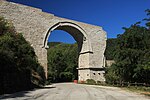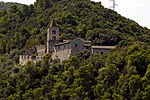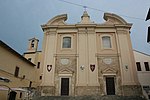Narni
Cities and towns in UmbriaHilltowns in UmbriaMunicipalities of the Province of TerniRoman sites of Umbria

Narni (Latin: Narnia) is an ancient hilltown and comune (municipality) of Umbria, in central Italy, with 19,252 inhabitants (2017). At an altitude of 240 metres (790 ft), it overhangs a narrow gorge of the River Nera in the province of Terni. It is very close to the geographical centre of Italy. There is a stone on the exact spot with a sign in multiple languages.
Excerpt from the Wikipedia article Narni (License: CC BY-SA 3.0, Authors, Images).Narni
Via Claudio Sforza,
Geographical coordinates (GPS) Address Nearby Places Show on map
Geographical coordinates (GPS)
| Latitude | Longitude |
|---|---|
| N 42.516666666667 ° | E 12.516666666667 ° |
Address
Via Claudio Sforza
Via Claudio Sforza
05035
Umbria, Italy
Open on Google Maps











